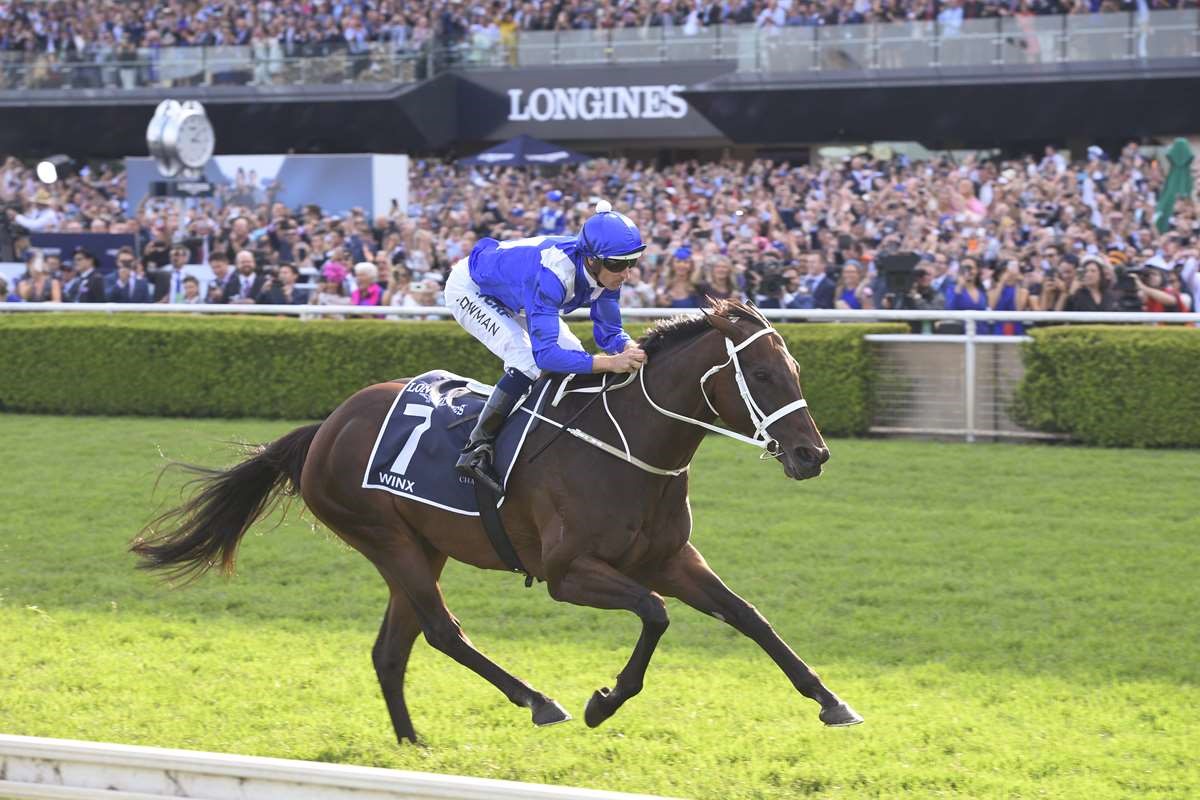
Winx, four-time winner of the Cox Plate as favorite. Photo via https://twitter.com/MulcasterBS/status/1117330716792987650/photo/2
It’s commonly cited as a fact that horse racing favorites win races about one-third of the time. It depends on many factors, of course, including the type of race. But, broadly speaking, you can expect the statistics to show that the favorite wins 30-35% of the time. The Kentucky Derby, for example, has around a 33% win rate for favorites.
As mentioned, this calculation depends on many factors. But it’s enough to say that some races treat favorites better than others. The UK Grand National, for instance, tends to see the favorites win about once every six years on average, so that’s an 16% strike rate.
But if you want to back a big race that does reward the favorites, look no further than the Australian horse racing Cox Plate. The Group 1 W.S. Cox Plate is arguably only second to the Melbourne Cup in terms of stature and prestige in Australian racing. But, whisper it, many purists prefer the Cox Plate as a spectacle and, crucially, as a betting event.
Cox Plate rewards excellence
And one of the reasons that it is cheered on by racing experts is that it is a fair race for the favorites, with a 41% strike rate for market leaders. The jump from 33% to 41% might not seem like a huge leap, but punters will understand that such an increase is massive when it comes to successful betting. Moreover, the strike rate for short-priced favorites (those under even money) comes in at 70%.
The first Cox Plate was run in 1922, so we have a decent data set going back 100 years. As with all races, shocks can occur: Dane Ripper, a 40/1 winner in 1997; Pinker Pinker, a 25/1 winner in 2011. But by and large, this is a race that favors the favorites, so to speak. Not since 2013 (Dundeel) has a starting favorite finished outside of the top 3.
So why is the Cox Plate such a good race for favorites? We mentioned the term “fair” earlier, and that gets to the heart of the issue. Now, you should not equate “fair” with “easy”, as the contest at Moonee Valley is anything but easy. What we mean is fair in the sense that it rewards excellence and punishes those not up to the task. Jockeys, too, must be at their very best. In a sense, you can think of it a bit like golf, where certain courses are deemed fair, whereas others are considered a bit more chaotic.
Weight for age seen as fair system
The Cox Plate is not a handicap like the Melbourne Cup. Instead it is a “weight for age” scale race, meaning the older horses will carry a heavier weight than the 3-year-olds. Again, this is seen as a measure to help the best horse win. You just need to look at some of the grumblings from horse owners when hearing the weight awarded by the handicapper for races like the Melbourne Cup and UK Grand National to appreciate that this system is seen as less random.
In the end, this is still horse racing, and that means the best horse wins on the day – regardless of the odds and pre-race perceptions of its talent. But if you are fond of backing the favorites, and want to bet on a big race that usually follows the money, then it’s hard to overlook the W.S Cox Plate. The 2022 race is scheduled for Saturday 22nd October. At this pre-nominations stage, Zaaki is the ante-post favorite. Worth keeping an eye on.







